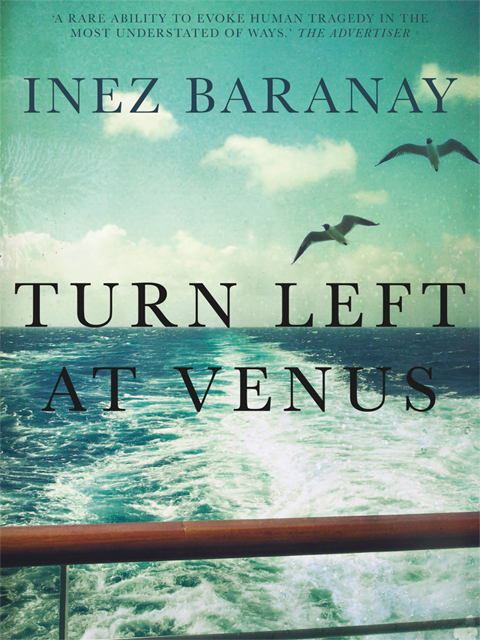Turn Left at Venus

A Haunting Story Of Writing, Relationships and Ageing
In the 1930s, Ada and Leyla meet as children on a boat bringing migrants from Old Europe to the New World. They talk of seeing kangaroos yet end up living miles apart from each other in suburban Sydney. Their separations are often lengthy but their friendship endures across continents and decades and is a thread in this haunting story of writing, relationships and ageing.
Ada (A.L. Ligeti) becomes an author, searching for a Utopian world, exploring aspects of patriarchy and gender in her groundbreaking feminist science fction novel called Turn Left at Venus. That novel and its sequels are celebrated and much discussed by generations of fans. Memory and imagination fold seamlessly into one another as Ada keeps moving on, from relationships and places, living in hotels and rental spaces in Kings Cross, San Francisco, Ubud and elsewhere.
Baranay's emotionally resonant portrait of the solitary and artistic life, lived adventurously across space and time, triumphantly celebrates the singularity of being, of age, of imagination, and of the 'getting ready' for the ending that life demands.
Australian citizenship, immigrant background, transnational culture, cosmopolitan temperament. Inez Baranay was born in Naples, Italy, grew up in Sydney. Australia. She has published twelve books of fction and non-fction, and has lived in and taught creative writing in countries including India, Indonesia and the United States. Most recently Inez taught at the university in Canakkale, Turkey, on the shore of the Dardanelles. She now lives in Sydney
Turn Left at Venus
Transit Lounge
Author: Inez Baranay
ISBN: 9781925760408
RRP: $29.99
Interview with Inez Baranay
Question: What inspired the story of Turn Left At Venus?
Inez Baranay: The desire to write an old woman as main character, to investigate vitality, curiosity and pleasure in old age; to celebrate feminist utopias and the power of fiction; to imagine a writer's life free of financial constraint; to set a novel in the years before I was born as well as in fantasy worlds; and, as I began to write this story, the desire to create versions by my fictional writer character of existing texts that inspired hers.
Question: How much of your inspiration comes from real life and real people?
Inez Baranay: I don't know how to measure the amount or the proportion. I do like to observe what we know as real life, and all that goes into the imagination stew. And a lot of inspiration comes from literature, as well as films, radio, tv, music of several kinds, the internet, and many other forms of art. But those are real life too aren't they? Dreams and imagination are inspirations, which could also be called part of real life.
Question: There are several issues raised in this book. Was this deliberate or did the story evolve this way?
Inez Baranay: The story and the issues in Turn Left At Venus evolve alongside each other, just as they inform each other. I was already interested in anarchism, utopia, the re-imagining of what old age can be, the best way to die, the potency of youthful friendship. As I created the central character Ada Ligeti, her life, her works, and the discussion around them, I also became more involved in ideas about feminist science fiction and the way texts live on through their fans.
Question: What do you hope readers take from Turn Left At Venus?
Inez Baranay: I hope readers find a sense of enjoyment, the pleasures of reading imaginative fiction that plays with things real life suggests. May the reader find an interest in the inner life of old women, a feeling of having entered the conversations about anarchism and science fiction, an almost-recognising of fictive texts inside this fiction.
Interview by Brooke Hunter
Turn Left at Venus
Transit Lounge
Author: Inez Baranay
ISBN: 9781925760408
RRP: $29.99
MORE



